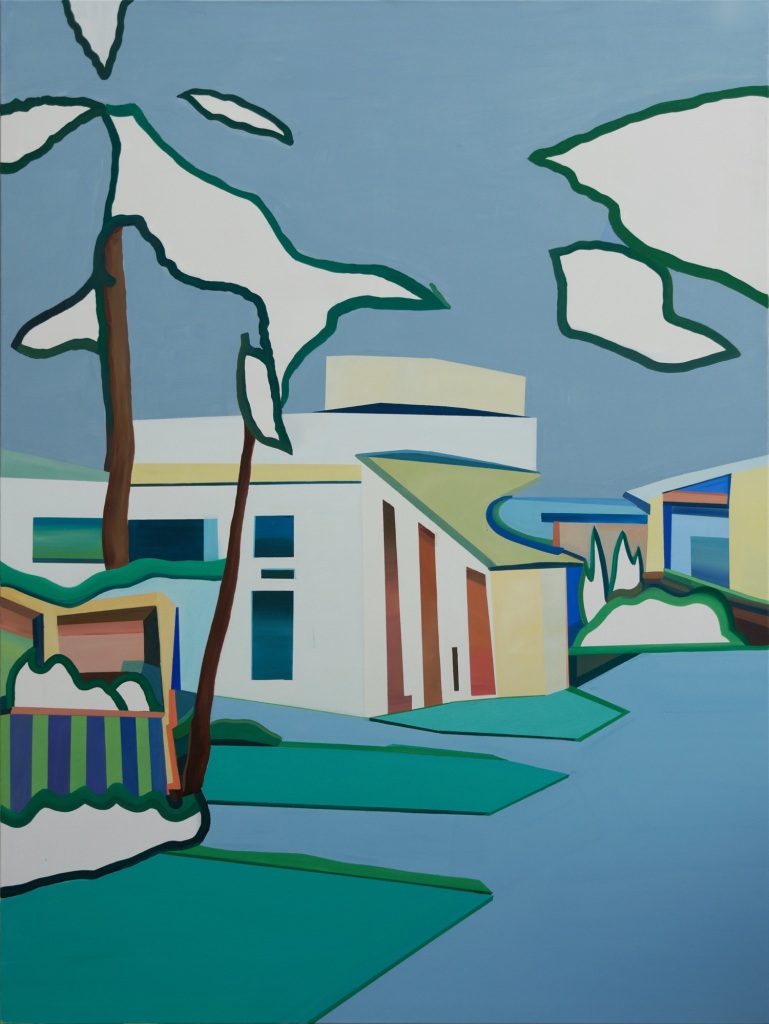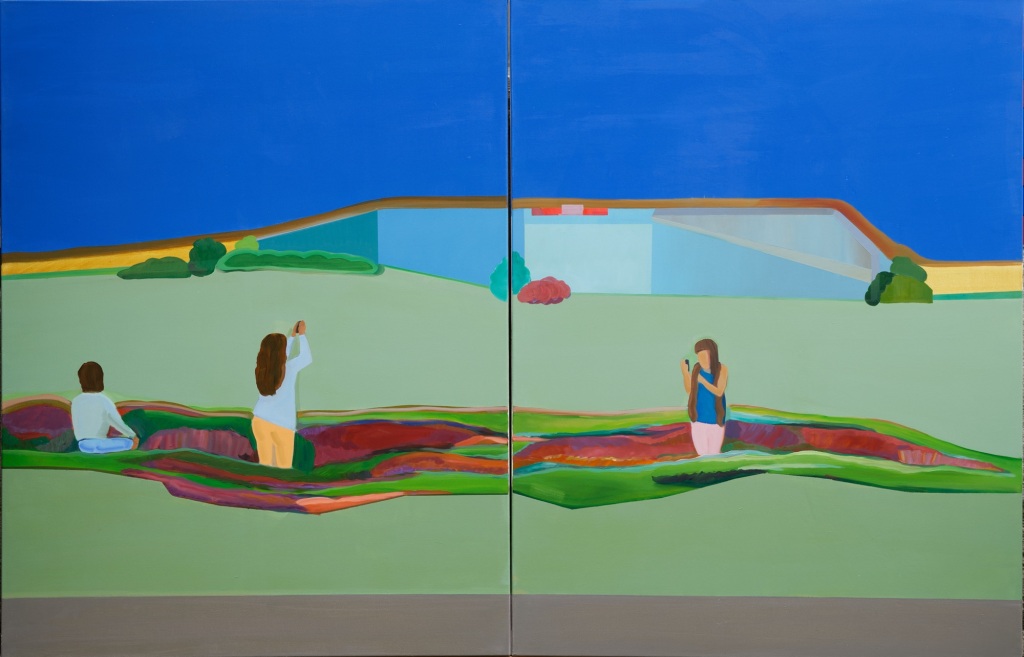This selection of paintings shows works depicting various places of leisure. The artist’s particular objects of interest are the beach cabins used as bars, showers, but also improvised camp sites(The Cabin, The Cabin (Albena), An Afternoon on the Beach on a Hot Day #1). These sceneries showcase the way that these constructions relate and correspond to the surroundings. The beach is a common motif in landscape painting, illustrating how people choose to enjoy and relax. Here,the artist’s decision not to portrait individual figures shifts the emphasis on the environment. There is another aspect in the choice of these motifs – they happened to be captured just before sunset, this tiny moment of silence before the light begins to fade.




Here, we find an almost paradoxical coexistence between sincere (and somehow unjustified)optimism, a lovely tranquility and nostalgic daydreaming about moments irretrievably lost in the past. A hope or a promise that was left behind somewhere in the fairy garden, in the empty bungalow or on the beach bar after the last martini.
Contemplating such beautiful and at the same time confusing landscapes, we involuntarily think of the words of Haruki Murakami written in Norwegian Wood – “We can never go back again, that much is certain. The past is still too close to us.” Human absence makes the places look abandoned, almost surreal. These are topographies that we sporadically remember when we long for a shot of melancholy.

Selfie Time in the Suburbs has a clear, almost banal topic – it shows three young individuals taking pictures, selfies, or simply hanging out in a colorful field that looks like a carpet. In the background there is a brutalist building, not very detailed, serving as a second plot in the image. The scene depicts a classic constellation, where the characters observe each other, while at the same time it is the artist who turns her gaze towards them. The image was taken during a visual research trip to Aspern Seestadt, one of the most famous urban development projects in Europe, located in the northeastern outskirts of Vienna.
There is a quizzical reversal in this work. Selfies not only capture particular moments, but also facilitate social interaction and connectivity. However, in the picture, the individual features of the characters are missing. People are simply “marked” and simultaneously seem slightly alienated in this landscape. Their anonymity completely contradicts the concept of self-representation that defines the essence of the selfie.
The visualisation of a large-scale architectural object in the picture raises the question about the nature of artificiality and nature itself. The concrete block can be taken for a sort of mountain towering on the horizon. At the same time, the soil and grass are deliberately “mechanically” painted and could be (mis)taken for concrete or asphalt.
The key to such scenes lies in our present time. Just 20 years ago, the viewer would have had a hard time understanding the action that is taking place. But today, such scenes almost bear the “ordinariness” of the genre painting from the second half of the 19th century.
Another group of paintings shows places used as party locations (A Moment of Joy and Silence) or a sports venue (Minigolf). Again, they revolve around the representation of places for leisure, where these sites are either appropriated or specially constructed for recreational activity. Here,we encounter another technique of representation that the artist uses, pointing out some small details which reveal the purpose of these venues without giving away too much, like a disco ball, garlands, or simply the lettering “MINIGOLF”. This particular mini golf cabin is located in Bregenz, but at the same time it could exist in any other Austrian city. In the field of the painting, it is represented as a kind of monument to the everyday entertainment of the middle class. Garlands and disco balls are equally regarded as status symbols of the same social class; associations with aesthetics that were exported to Europe across the Atlantic during the 1970s.



Hotel Odessos feels like a throwback to a subject matter that Gankovska broadly researched between 2002 and 2004: the hotel complex at the Bulgarian seaside. In this particular painting we see a segment of the infamous hotel in the centre of Varna, Bulgaria. As a result of the architectural aesthetics of midcentury modernism, this motif nevertheless might as well be assumed to exist in Miami, Acapulco, or the Côte d‘Azur. Once again, the style involves the characteristic representation of greenery as a blank space on the canvas, similar to the blind spots that the artist left in the work The Cabin (Albena).
The images are painted with minimalist brush strokes, while all the main elements remain clearly recognizable. The visual language employed by the artist derives partly from architecturaldrawings, influences of the 1920s Soviet Avant-Garde, and 1960s Pop art. Clarity plays an important role in the paintings. The working process starts with a drawing, showing outlines and spots, which are transferred onto the canvas. The artist calls this process “translation”. Curator Vladiya Mihaylova compares Gankovska’s compositional elements to timekeeping: “colourfultestimonies of the transience and transformation of living conditions. Far from documentation and realism, her works represent ‘evidence ‘of a certain organization of spaces that people share and of society in general.”
Boris Kostadinov in collaboration with Vasilena Gankovska
